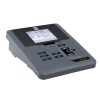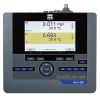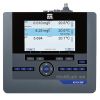YSI TruLine Chloride Electrode
Features
- Solid state ISE
- Double junction reference
- 1.8-35,500 mg/L range
- Free ground shipping
- Expedited repair and warranty service
- Lifetime technical support
- More
The TruLine series of laboratory ISEs consists of 15 electrodes that have an integrated reference, eliminating the need to have a separate reference half-cell. Each TruLine ISE has a refillable double-junction reference, resulting in a long electrode life and exceptional measurement reliability. TruLine ISEs can be connected to any ISE instrument featuring BNC connection, including the YSI 1320. Reference/electrode fill solution, ionic strength adjustor, and small bottle of standard are included with each ISE.
- Wide selection of 15 electrodes for 16 different parameters
- 4 sensor technologies - gas sensing, polymer/PVC membrane, solid state, and glass sensor
- Combination (i.e. full-cell), refillable electrodes with double-junction reference
- BNC connection, 1m cable
- Made in the U.S.A
- Reference/electrode fill solution, ionic strength adjustor, and small bottle of standard included with each ISE
- 12 month warranty for solid state, glass sensor, and gas-sensing ISEs
- 9 month warranty for ISEs with polymer/PVC membrane
- (1) Electrode with 1m cable
- (1) Small bottle of reference/electrode fill solution
- (1) Small bottle of ionic strength adjuster
- (1) Small bottle of standard solution
In The News
Floating Global New Ideas: Buoy-Enabled Research at Florida Agricultural and Mechanical University’s School of the Environment
Florida Agricultural and Mechanical University (FAMU), based in Tallahassee, Florida, is the highest-rated public Historically Black College or University in the United States. FAMU’s School of the Environment (FAMU-SOE) offers BS and BA degrees in Environmental Studies, and BS, MS, and Ph.D. degrees in Environmental Science, with specialisms available in areas including Environmental Policy and Risk Management, Aquatic and Terrestrial Ecology, and Biomolecular Sciences. In 2021, FAMU-SOE deployed a NexSens CB-450 buoy in Apalachee Bay, a key oyster farming area around 30 miles south of Tallahassee. The buoy has quickly been incorporated into the curriculum, providing environmental insights for student research, the community, and beyond. Dr.
Read MoreMonitoring Habitat Suitability and Water Quality in Northwest Arkansas Springs
Northwest Arkansas has seen an economic, industrial, and population boom in recent years as a result of expanding businesses, which have created thousands of jobs in the region and the mass migration of employees and construction companies. However, with this growth has come rapid urbanization and the degradation of the natural landscape, specifically the freshwater springs that can be found throughout the region. These springs are critical habitat centers for native wildlife, home to threatened and endangered fish, and those that have yet to be listed. Zach Moran, Assistant Professor of Fisheries Science at Arkansas Technical University, is working to help monitor these habitats and provide key data that will hopefully inform future development in the region.
Read MoreThree Decades of Research at Acton Lake
A multi-disciplinary team at Miami University, Ohio, has been studying the environmental change at Acton Lake for over three decades. Using three different NexSens buoys over this time, the team has an incredible archive of data that is helping build a picture of Acton’s past, present, and future. Until recently, a NexSens CB-50 buoy was used alongside other environmental monitoring at Acton Lake. In May 2025, the Miami team deployed a new XB-200 buoy , future-proofing their ongoing monitoring using real-time buoy systems. Acton Lake, a small hypereutrophic reservoir in southwest Ohio, covers 2.4km² and has a maximum depth of about 8m. The dam was built in 1956, and the lake has a large agricultural watershed.
Read More













